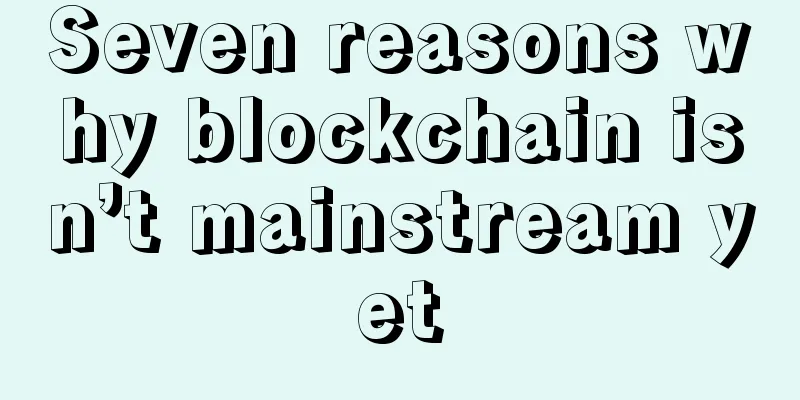Seven reasons why blockchain isn’t mainstream yet

Translation: Annie_Xu As more and more people invest in the much-hyped blockchain technology, we can’t blame lay observers for mistakenly believing that the technology’s time has arrived. There has been much talk about the potential of distributed ledgers to revolutionize core business processes, but like all cutting-edge technologies, blockchains also bring risks to business. Speaking at the Forrester Digital Transformation Europe summit in London last week, principal analyst Martha Bennett outlined the biggest inherent risks of blockchain and how businesses can avoid them and unlock the technology’s potential. Martha Bennett 1. Lack of clear definition First, Bennett said that it is important to unify the definition of blockchain, and described blockchain as "a database that you can only write to once and can only add to, not overwrite. Blockchain is distributed and either fully replicable or partially replicable."
If you replace text ledgers with databases, you won’t be so scared to talk about it. So why is it so important? “The main message I took away from this is to make sure you are on the same page whether you are talking about blockchain or not; because blockchain is like the cloud or big data, it can be completely centric to your will.” 2. Security and risks What makes financial services and insurance companies salivate is that blockchain can ensure transaction security and reduce risks, because anyone who can see the blockchain can immediately detect any modified records. However, Bennett warned people:
3. Key Management Bennett discusses the recent spate of cyber thefts at SWIFT and how blockchain alone can’t prevent these types of thefts.
4. Perhaps permissions and permissions Bennett peppered the IT team with questions about blockchain.
5. Enterprise Deployment Just because a technology is mature and meets the needs of enterprise use cases, such as remittances, payments, post-trade processing, compliance ledgers, etc., does not mean it is suitable for enterprise IT environments. As Bennett said, "After all, the technology is not mature yet."
6. Storage Anyone looking to deploy blockchain technology should first identify the storage problem. Bennett said:
7. Unified standards Recently, Bennett said that there is a need to reach a unified standard and process. Although the 3R Alliance and others are working on this, large-scale cooperation among large global financial institutions is obviously challenging. "When was the last time more than 40 banks reached a unified process?" Finally, Bennett gave a suggestion to those who study blockchain
|
<<: Silicon Valley boldly creates a new stock exchange LTSE, Wall Street obstructs it in every way
Recommend
Is the fate of people with thick lips good or bad?
The color of the lips often reflects a person'...
Opinion: Bitcoin halving is actually a reward for efficient miners
For miners after the Bitcoin halving, some are fe...
What will happen when Bitcoin's block reward is halved for the third time?
The next Bitcoin block reward halving will take p...
Huobi: Global banks lead blockchain gold settlement platform
According to the Huobi Blockchain Research Center...
Poland's free online disk MegaWrzuta, no registration required, fast upload of large files
In today's digital age, file storage and shar...
A mole on a woman's belly button indicates that her love life will blossom
What does it mean when a woman has a mole on her ...
China UnionPay and IBM jointly use blockchain technology to develop a points trading platform, where users can freely trade UnionPay card points with others
IBM is reportedly working with China UnionPay to ...
PoS: What are the problems? Which link is most likely to go wrong?
I have said in previous articles that 2019 is the...
Investing 30,000 yuan in Bitcoin "disappeared", female college student sued boyfriend for compensation
Source: Huashang.com Original title: "30,000...
How to tell if a woman is a virgin by face reading
How to tell if a woman is a virgin by face readin...
Is it good for a man to have a mole on his right forehead?
In mole physiognomy, it is said that the good or ...
The facial features of a stubborn and headstrong person
The facial features of a stubborn and headstrong ...
What does it mean when the wisdom line and the emotion line intersect? Wisdom line analysis
The wisdom line is a slanted line in the center o...
Why will the demand for Bitcoin continue to rise?
Based on a long enough time frame, it is often cl...
What does it mean for a woman to have a mole on her widow's peak? OK?
Although moles are very common to us, and many of ...









